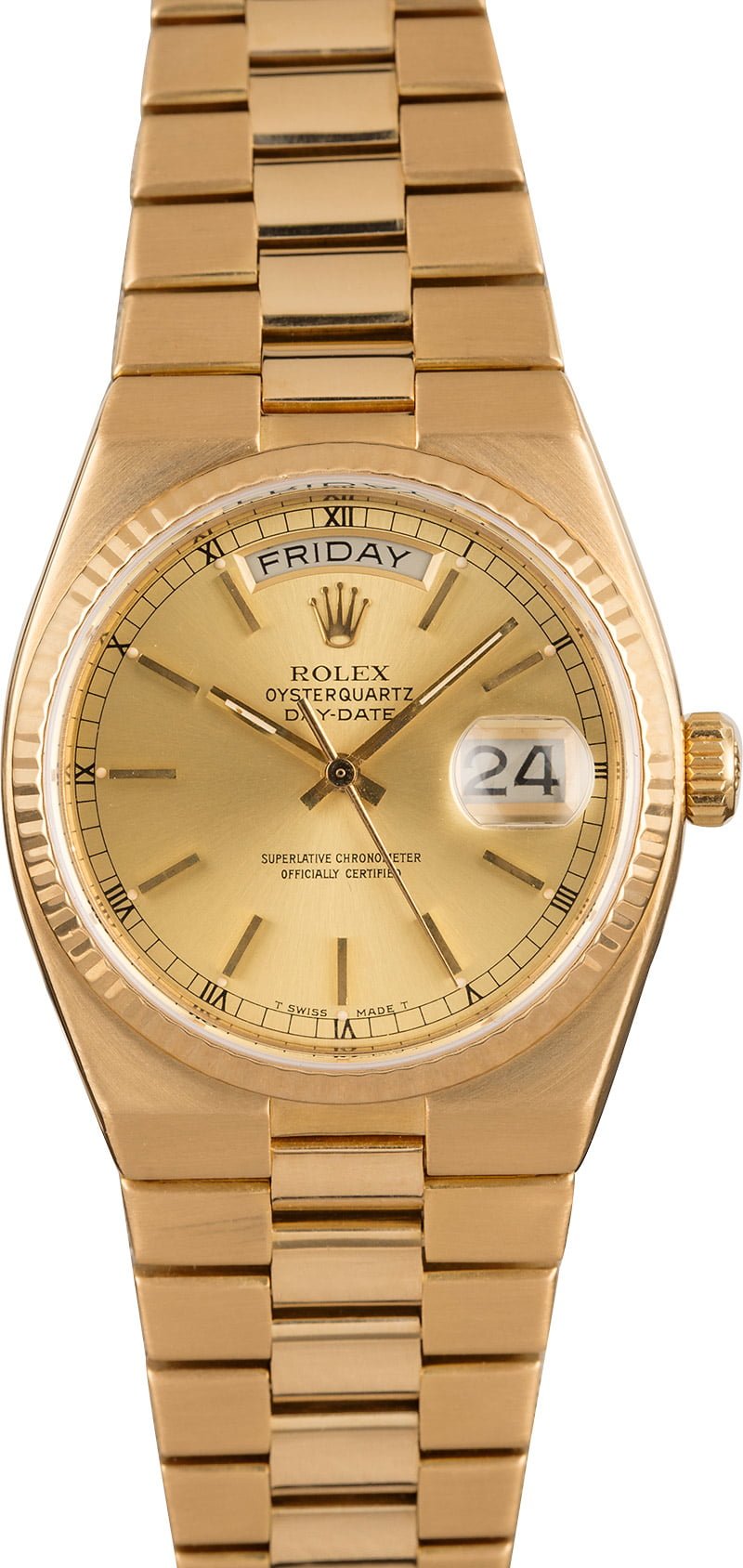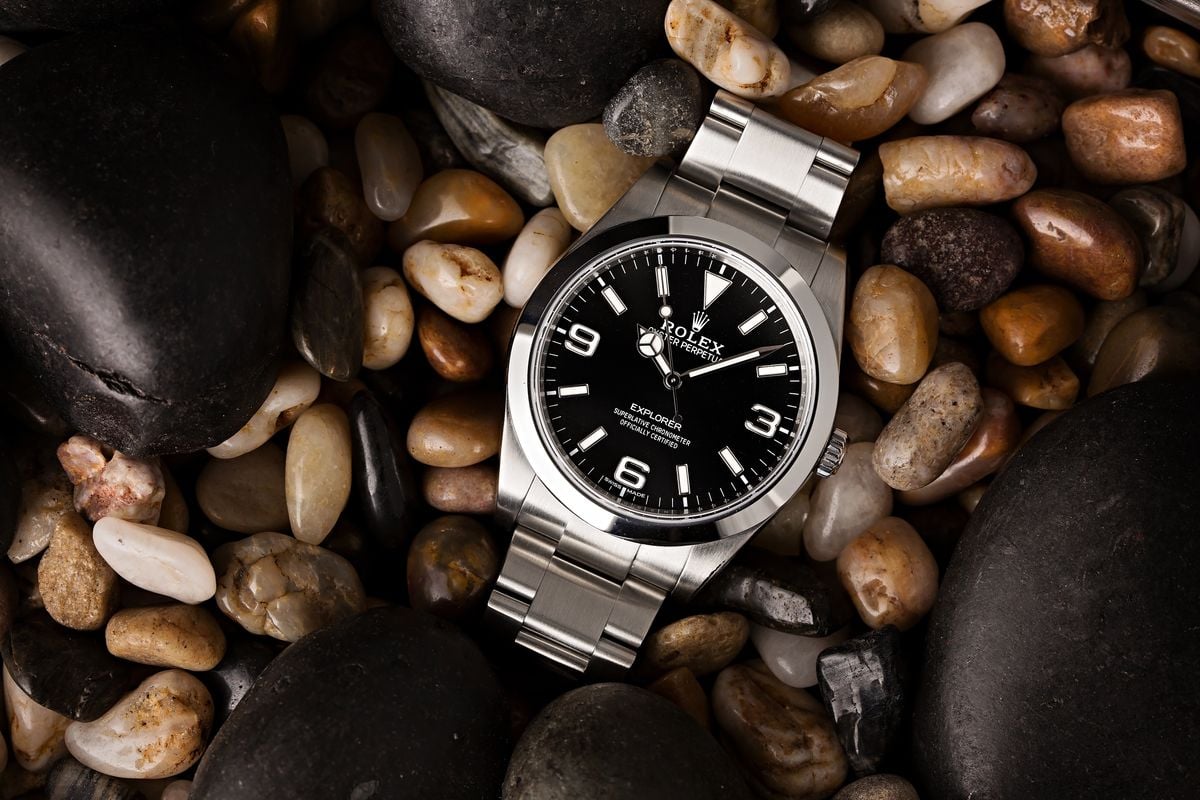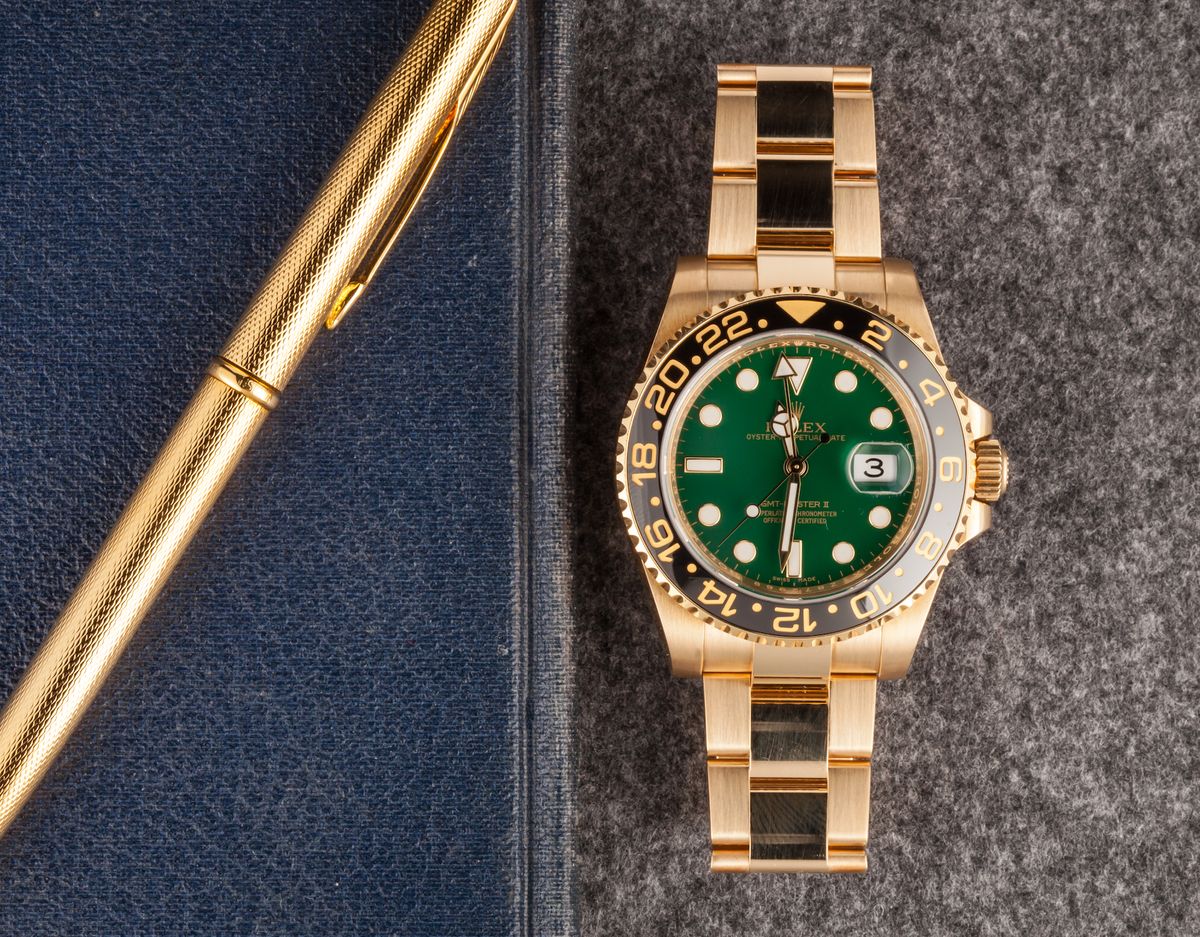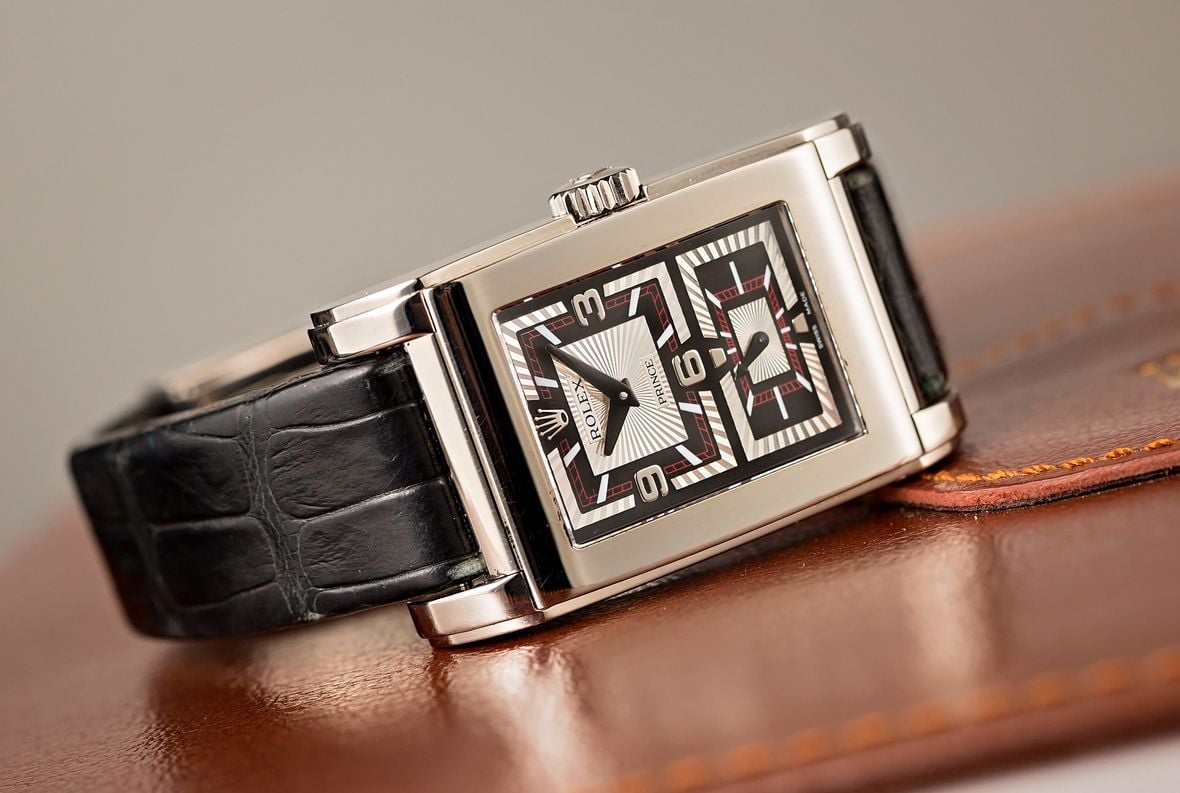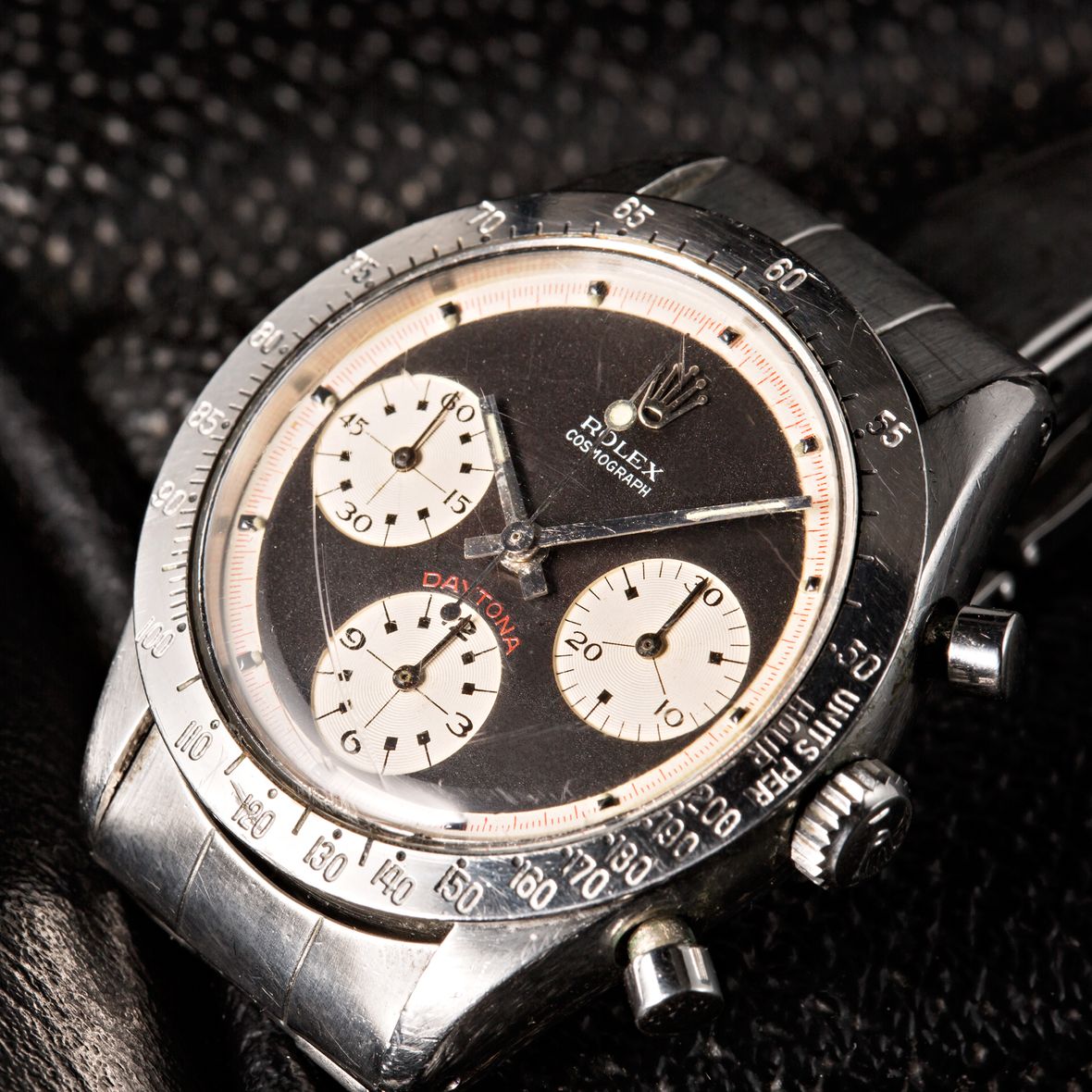First released in 1977, Rolex’s Oysterquartz watches, a series of models based around the bestselling Rolex Day-Date, Datejust, and Date watches. They were the company’s delayed, begrudging concession to the cheap and extremely precise electronic pieces flooding the market, which would go on to wipe out two-thirds of Switzerland’s traditional watchmaking houses by the end of the 1980s, in what became known as the Quartz Crisis.
Rolex had dabbled with quartz technology before, teaming up with around 20 other brands to form the CEH consortium (Centre Electronique Horloger) in the early ’60s in a desperate bid to generate a quartz movement of their own. The result was the Beta-21, completed in 1969, and launched the following year in watches from more than a dozen different manufacturers, with Rolex’s creation being the ref. 5100.
The Beta-21 was too big and awkwardly shaped to fit inside any of the existing Oyster cases Rolex had, and so legendary designer Gérald Genta (the man behind both the Audemars Piguet Royal Oak and the Patek Philippe Nautilus) was drafted to build a watch around it. The then-enormous 40mm model shared definite similarities with those two iconic pieces, notably in its slab-sided case and integrated bracelet.
While the ref. 5100 was unquestionably the most accurate watch Rolex had ever made and the initial 1,000 examples sold out in pre-order despite also being the brand’s most expensive to date, there were simply too many points working against it to see it put into full production.
Firstly, without the traditional Rolex Oyster case, the new quartz watch couldn’t boast the same superior water resistance that had helped forge Rolex’s reputation. Additionally, the Beta-21 movement ran out of power very quickly, and in addition to all of that, the same movement was also being used in a host of watches made by Rolex’s competitors. Then as now, Rolex was ferociously independent, and in 1972, Rolex broke away from the CEH, retreated to its Geneva compound, and got to work on producing a quartz caliber of its own.
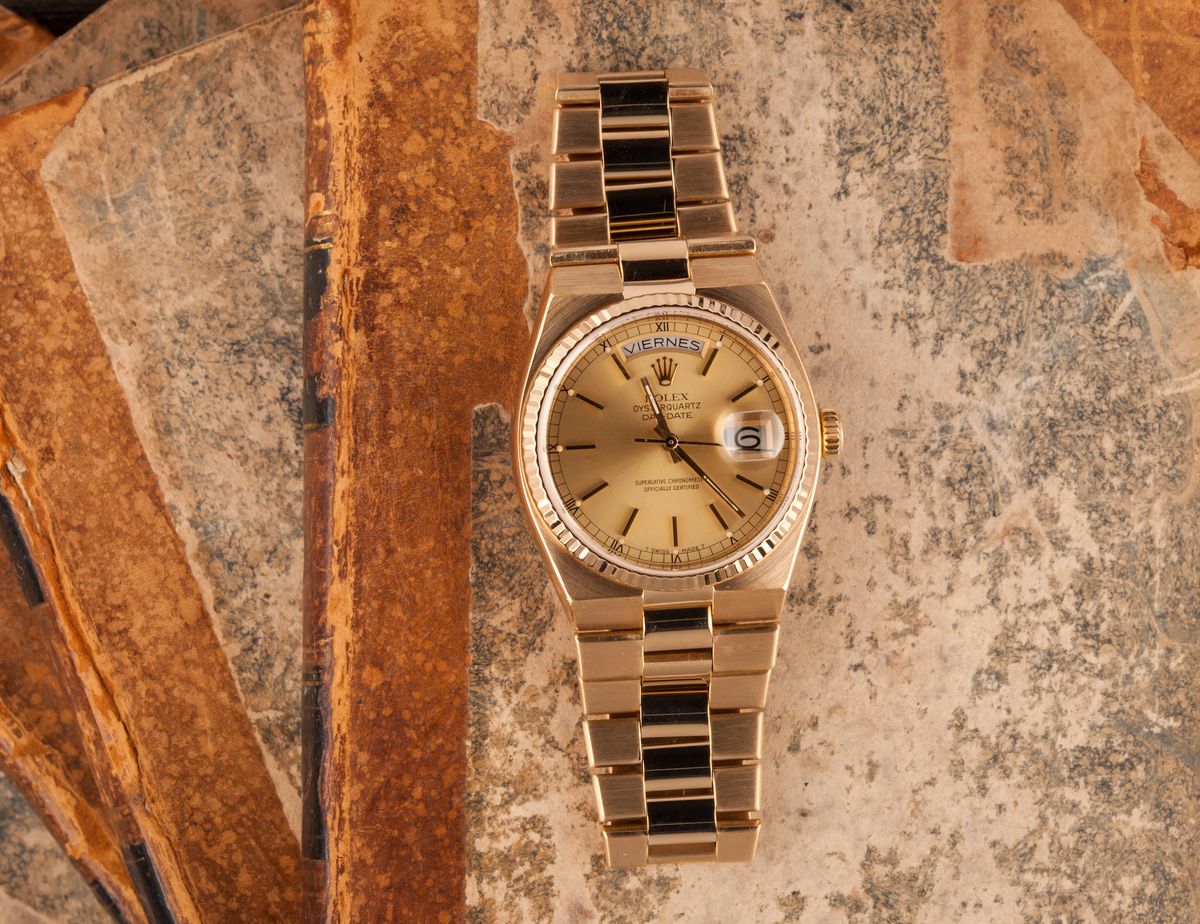
Rolex Oysterquartz Movements
Five years later, Rolex emerged with two quartz movements. The Cal. 5035 was fitted inside quartz-powered Datejust and Date watches, while the Cal. 5055 was used to power the equivalent Oysterquartz Day-Date.
Rather than trying to reinvent the wheel, both movements shared many of the components that were inside the new generation of traditional calibers produced to power the recently released mechanical versions of each watch, the Cal. 3035 and Cal. 3055. The entire drive mechanism was based on the concept of a conventional escapement, as were the gear train and pallet assembly, and with the exception of the pulse motor and electronics, the movements were all largely identical.
However, the performance was another matter entirely. Rolex used an oscillator four times faster than the one found in the Beta-21, as well as a thermistor, making it one of the first analog thermo-compensation movements ever built. 18-months after their introduction, the brand sent the Oysterquartz calibers off to the COSC for the first time (after altering the shape of the crystal) where they easily surpassed the incredibly stringent accuracy parameters of +/- 0.2 seconds a day. While no official data has been released (this is Rolex, after all) it is believed the movements had an average variation of just 50 seconds a year.
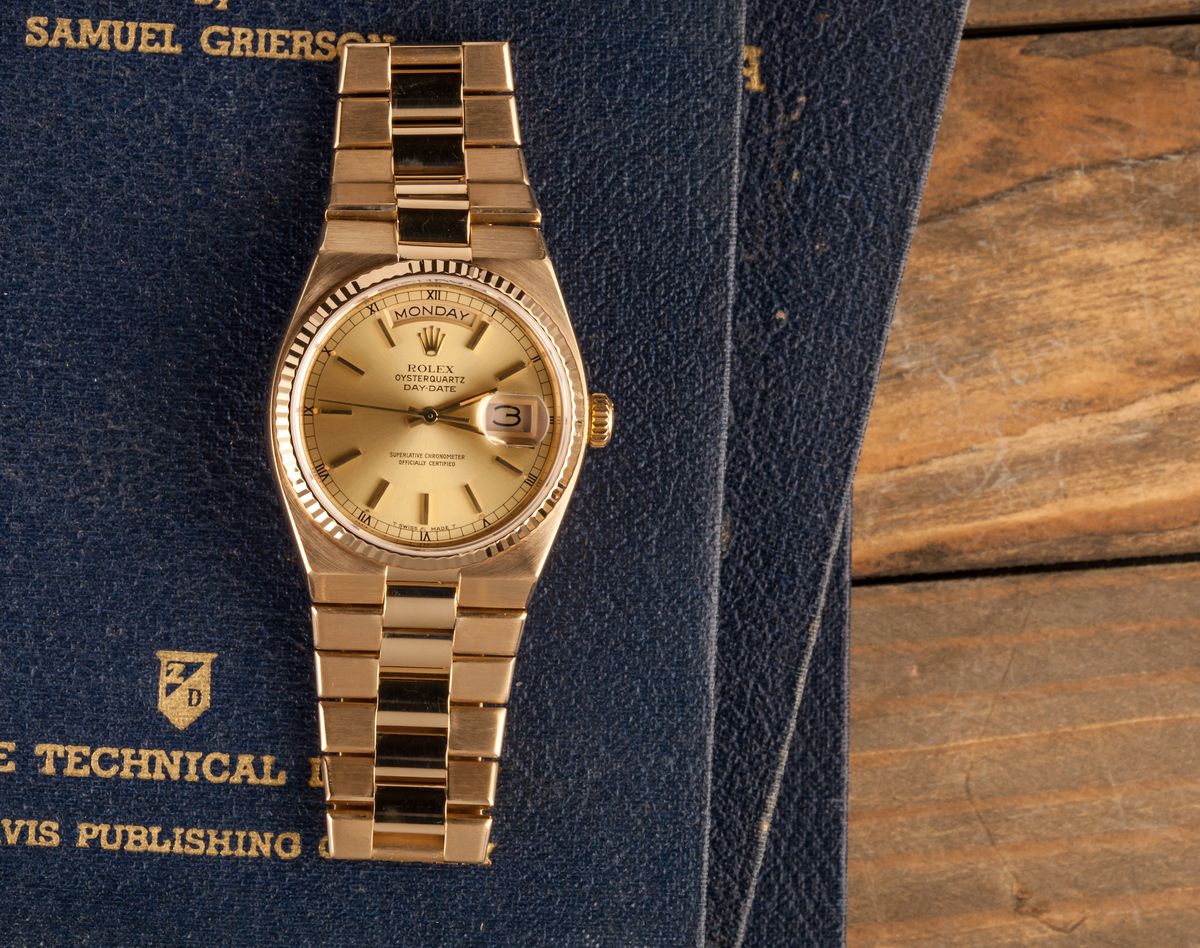
Rolex Day-Date Oysterquartz Models
The technology was unlike anything the brand had made before, as were the watches containing it. The quartz-powered Rolex Datejust model, Date, and Day-Date all followed the basic architecture of the Genta-designed ref. 5100. However, the in-house calibers were significantly smaller than the Beta-21, and so were able to fit into a specially-devised 36mm Oyster case, with all its water-resistant abilities intact.
Andre Heiniger, Rolex’s CEO at the time, was adamant that no one mistake the electronic versions of his world famous watches for their mechanical counterparts. As a result, they were given the sharp, angular profiles that were very much of the 70s era, leaving both watches looking far larger and bolder appearance on the wrist.
The Oysterquartz Day-Date was only ever cast in yellow or white gold, with no rose gold or platinum as you will find on the traditional pieces. The premium offering from the brand, it was issued in a number of different varieties, some relatively plentiful now on the pre-owned market, others incredibly rare. Rolex made just 25,000 quartz watches in total, spread across all three collections, from 1977 to 2003, leaving some of the numbers for the more rare examples in the mere handful.
Below, we give a quick rundown of the 12 Rolex Day-Date Oysterquartz references.
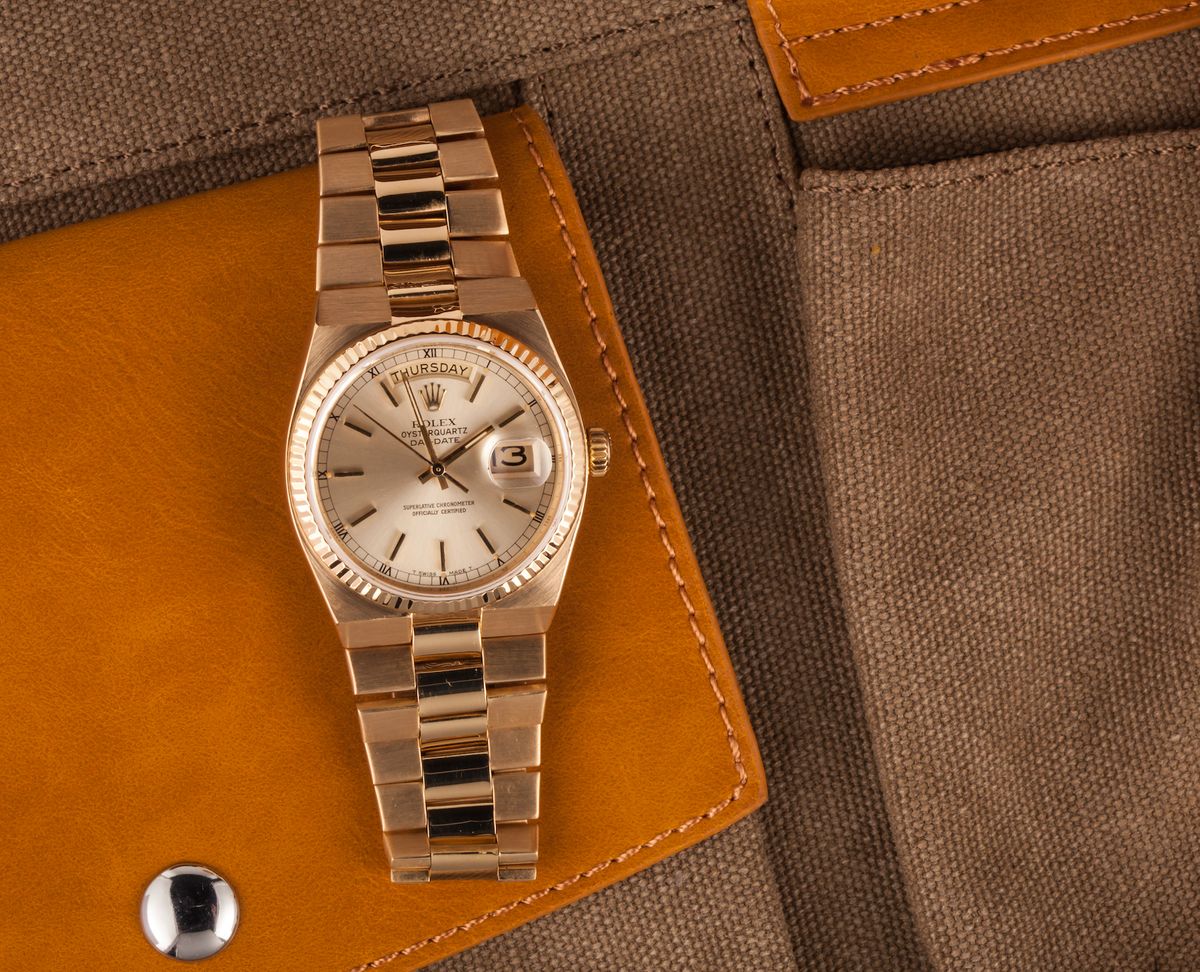
Rolex Day-Date Oysterquartz ref. 19018
- The most prevalent piece you will find, the ref. 19018 is the solid 18k yellow gold model, complete with its signature fluted bezel. The dial color selections were limited to primarily champagne, white, and black as well as a few wood dial versions.
Rolex Day-Date Oysterquartz ref. 19019
- These are the same as above but cast in white gold. They are scarcer than the ref. 19018, being made in an age when yellow gold was king. Dials here were similar too, but with a blue option added.
Rolex Day-Date Oysterquartz ref. 19028
- Another yellow gold piece, these had eight tiny pyramids on each of the bracelet’s center links, as well as around the circumference of the bezel. Some examples also used the pyramids for hour markers too.
Rolex Day-Date Oysterquartz ref. 19038
- Same as above, but with the addition of diamonds. The gemstones were used for indexes, and a further 12 set around the bezel above each marker. This reference also sat on the ‘Pyramide’ bracelet.
Rolex Day-Date Oysterquartz ref. 19048
- Released later on into the Oysterquartz’s run, the yellow gold ref. 19048 switched back to the standard President-style integrated bracelet, but had a bezel embellished with 44 brilliant-cut diamonds.
Rolex Day-Date Oysterquartz ref. 19049
- The white gold version of the ref. 19048. The more neutral metal gives the watch a greater versatility, but so few were produced that they are amazingly hard to find. The remaining references are all extremely rare, so much so that remaining examples of some might now number in single figures, and others are only rumored to have existed at all.
Rolex Day-Date Oysterquartz ref. 19058
- Back to yellow gold, the ref. 19058 are so uncommon they may have been a special order. Similar to the ref. 19049, the stones in its bezel are baguette-cut rather than round, and could be diamonds, rubies or emeralds.
Rolex Day-Date Oysterquartz ref. 19068
- With a yellow gold case, ‘Pyramide’ bracelet and a bezel with brilliant-cut diamonds, this example was a cross between the ref. 19038 and the ref. 19048. Most often finished with a diamond hour marker dial.
Rolex Day-Date Oysterquartz ref. 19078
- A similar aesthetic to the recently released Rainbow Daytona, the ref. 19078’s bezel is set with multicolored gems, ranging from blue at the 12 o’clock and going through green, yellow, orange and red. Painstakingly selected stones are used for the indexes to match each accompanying point in the bezel.
Rolex Day-Date Oysterquartz ref. 19148
- Very similar to the ref. 19048 – yellow gold with 44 diamonds around the bezel. However, this model is fitted with what is known as the ‘Karat’ bracelet, which is finished with 12 more diamonds on each center link, making 300 in total.
Rolex Day-Date Oysterquartz ref. 19168
- Like the ref. 19058 with its baguette-cut gemstone bezel, the ref. 19168 is set apart by another, truly extraordinary, bracelet. Sometimes referred to as the ‘Octopus’, each center link has either a sapphire, ruby or diamond, while the two outer links are finished with another diamond placed in an unusual cylindrical setting.
Rolex Day-Date Oysterquartz ref. 19188
- Absolutely spectacular, the bezel of the ref. 19188 features four groups of five round diamonds, interspersed by another four sets of six baguette-cut rubies. Each hour marker is also a tiny ruby, and there is a further ring of diamonds around the edge of the dial in place of a minute track, with only the day window left clear. Sitting on the ‘Karat’ bracelet, it is one of the rarest examples of the Rolex Day-Date in existence.
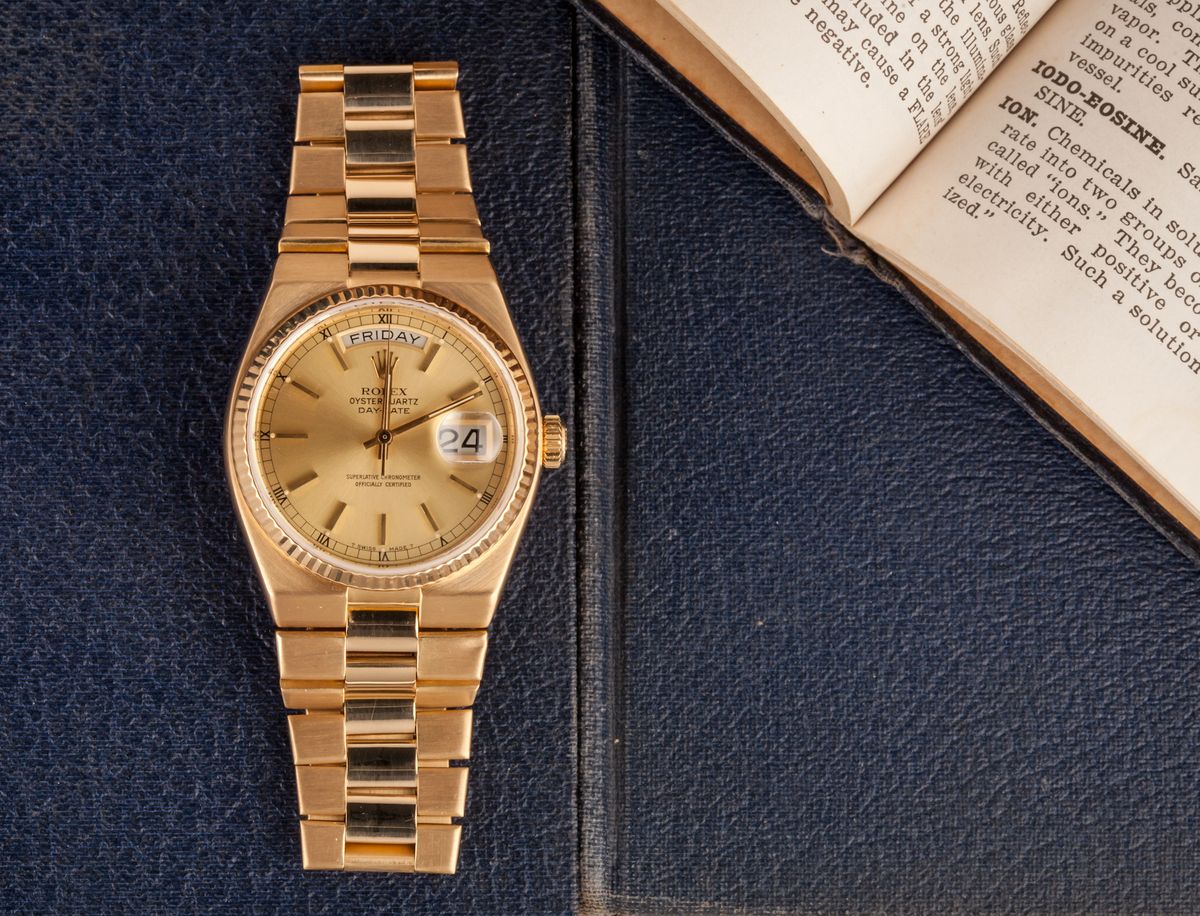
While Rolex clearly only engaged with the world of quartz out of sufferance, it can’t be said the brand was at all half-hearted about the whole thing. Not only did Rolex create two of the finest quartz calibers of their time, still regarded as groundbreaking today, but the watches selected to house them were among the most distinctive and pioneering in the brand’s history.
Visually distinct, and rare in number, Rolex Day-Date Oysterquartz watches are unlike any other models that the brand has ever put forward, and they are some of the best quartz watches on the pre-owned market too. Quartz movements often get a bad reputation for being cheap, as the majority of examples you will encounter and inexpensive and entirely uninspiring (even if they are remarkably reliable). However, the quartz movements used to power Rolex Oysterquartz watches are technological marvels that are finished and decorated to the same exacting standards as Rolex’s mechanical movements.
The Oysterquartz version of the popular Rolex Presidential model is fast becoming a vintage collector favorite, with prices rising rapidly in recent years. For something a little out of the ordinary and sure to garner attention, they are well worth considering adding to your collection.
